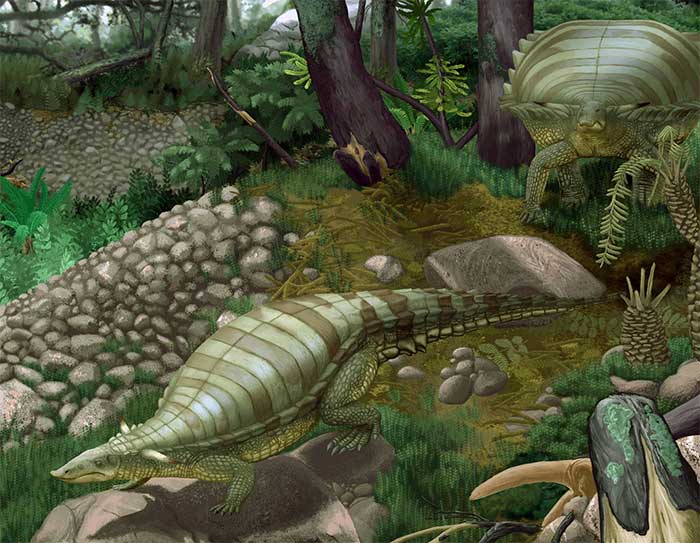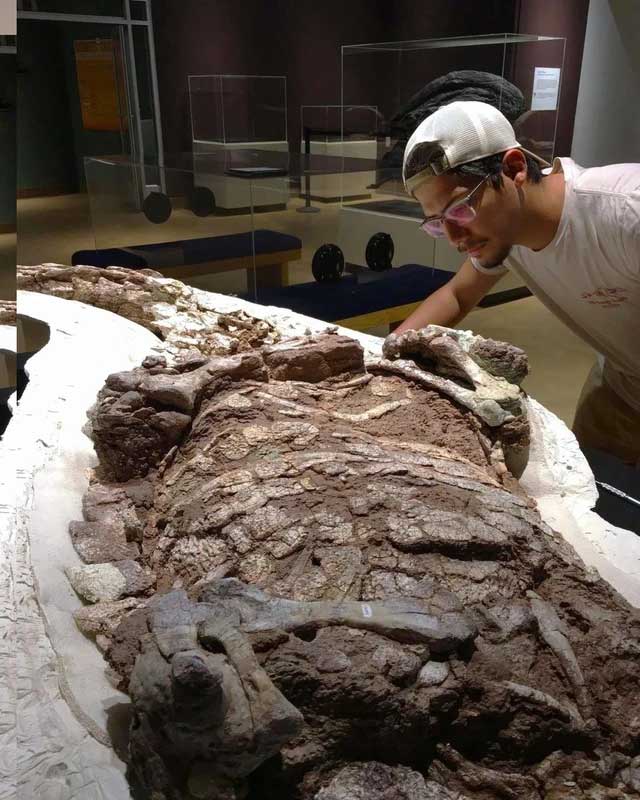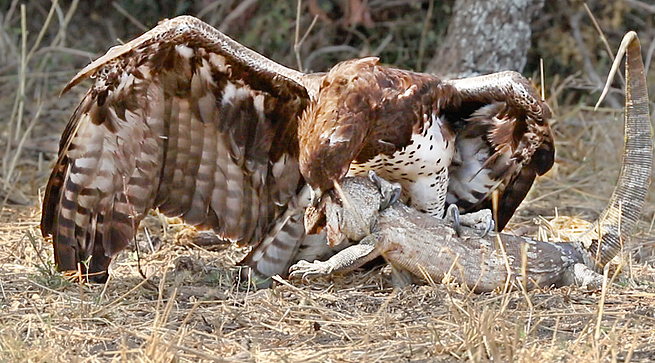A beast found in the state of Texas – USA has puzzled scientists for more than 3 decades.
A team of scientists led by paleontologist William Reyes (USA) from the University of Texas at Austin (USA) identified the beast as a new species of the Aetosaur family.
Aetosaurs are an extinct group of armored archosaurs , closely related to crocodiles and distantly related to birds and dinosaurs. The name Aetosaur means “eagle lizard” , because its skull resembles an eagle’s skull, according to Newsweek.
 The appearance of the Texas “eagle lizard” beast when alive – (Graphic photo: SCI-NEWS).
The appearance of the Texas “eagle lizard” beast when alive – (Graphic photo: SCI-NEWS).
The new species is named Garzapelta muelleri, has a length of up to 3.5 m and lived in the US state of Texas at the time of 218 million years ago, in the middle of the Triassic period.
Like other Aetosaurs, they were omnivores but mainly herbivores.
According to an article published in The Anatomical Record magazine, its fossil remains were excavated in 1989 in the Cooper Canyon formation in Garza County, Texas.
However, until now, it has only been identified as a completely new species, after scientists pointed out some unique features on its armor that known Aetosaur species have never possessed.
However, this species’ position on the Aetosaur evolutionary tree remains controversial.
This beast also has many similar characteristics to two other Aetosaur species found in the Eagle Basin area of Colorado – USA, especially the structure of the bone scales above, which gives them an armored back. .
A group of authors led by researchers from the University of Texas in Austin (USA) describe it as an American alligator crossed with an armadillo, because it possesses scary armor.
 Giant armor being researched in the laboratory – (Photo: William Reyes).
Giant armor being researched in the laboratory – (Photo: William Reyes).
It is a type of spiky armor similar to the armored dinosaurs of the Jurassic period immediately after the Triassic period in which Garzapelta muelleri lived.
This species, along with its Aetosaur relatives, is believed to have disappeared right at the intersection of these two geological periods, about 200 million years ago.
However, they provided the basis for the armored dragons and other armored creatures of later periods.
The bone plates that covered Aetosaurs were bony scales, attached directly to the skin and fitted together like a mosaic. In addition, Garzapelta muelleri also possesses curved spines on both sides, helping them to be more effectively protected from enemies.
This new species was discovered by surprise, when scientists studied the armor that was once mistaken for a dragon or a known Aetosaur.
The armor remained in Texas Tech University’s fossil collection for 30 years before being noticed and causing a new species to appear in the paleontological record.
According to the authors, research on the creatures of this transition period will provide a lot of important data and the evolution of armor on the bodies of reptiles in later periods.

The appearance of the Texas beast shows that this area once witnessed an explosion of a diverse group of Aetosaurs.
During the Triassic period, it was part of the disintegrated supercontinent Pangea, a wet land that, in addition to Aetosaurs, was inhabited by many species of ancient crocodiles, according to the University of California Museum of Paleontology ( America).





